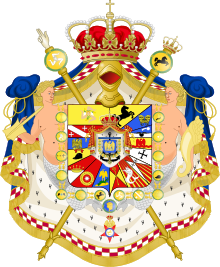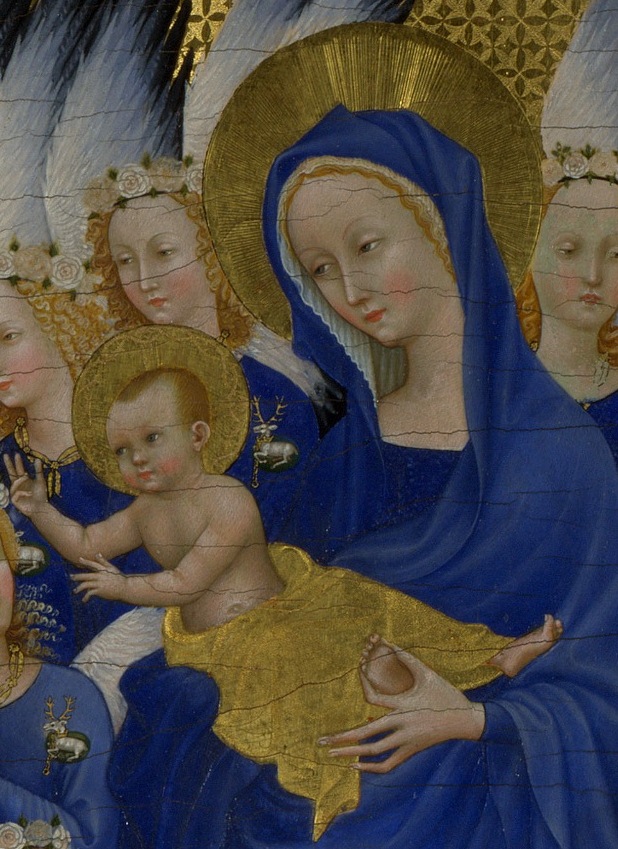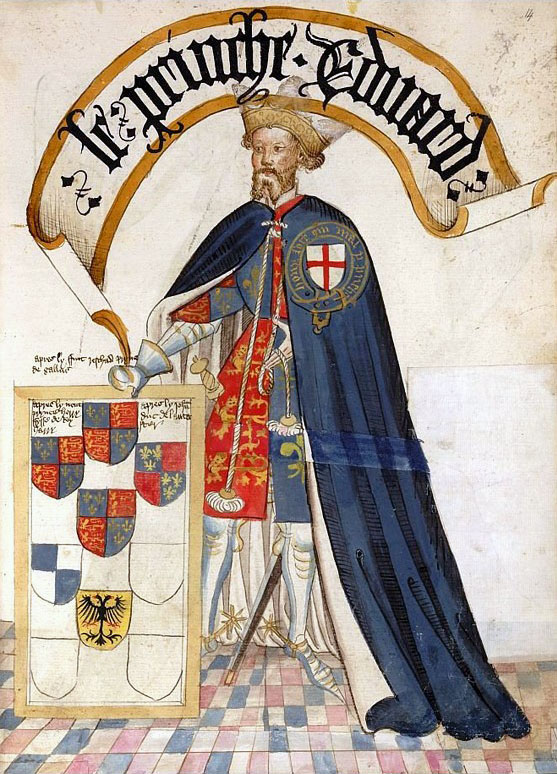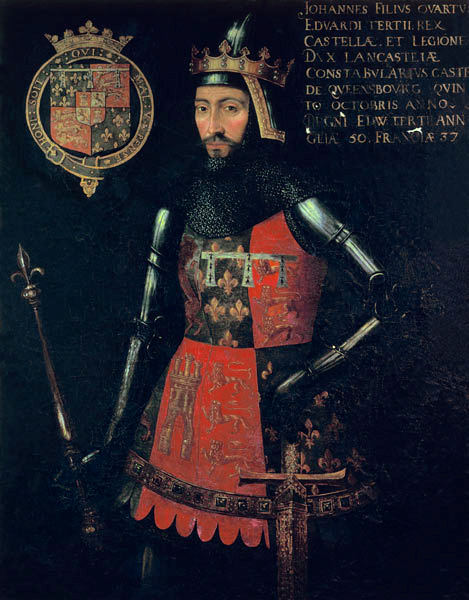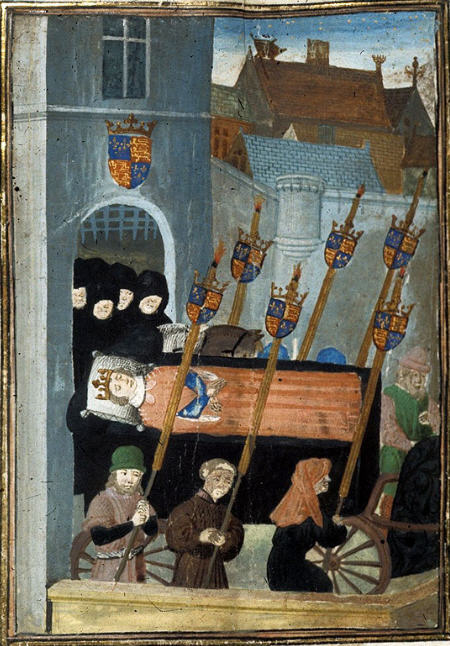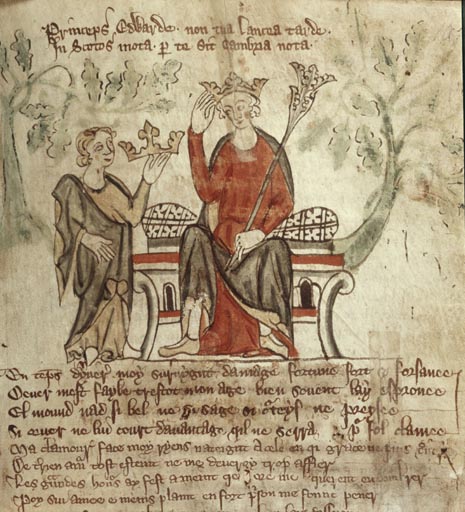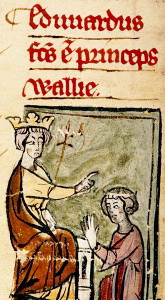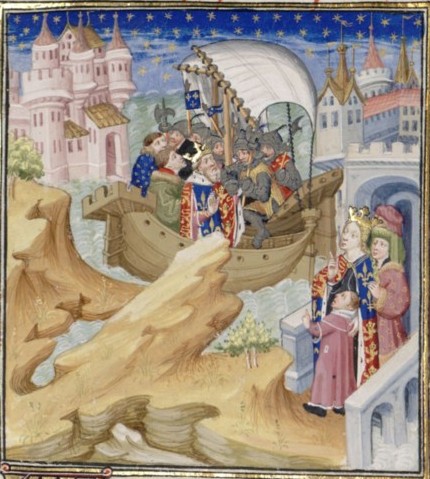by Scott Mehl © Unofficial Royalty 2016

Marie de’ Medici, Queen of France – source: Wikipedia
Marie de’ Medici was the second wife and consort of King Henri IV of France. She was born on April 26, 1575, at the Palazzo Pitti in Florence, Grand Duchy of Tuscany, now in Italy, the sixth of seven children of Francesco I de’ Medici, Grand Duke of Tuscany, and Archduchess Joanna of Austria. Of her siblings, only one lived to adulthood:
- Eleonora (1566-1611) married Vincenzo Gonzaga, Duke of Mantua, had issue
The House of Medici came to prominence in the 15th century, as founders of the Medici Bank, the largest bank in Europe, and later as Grand Dukes of Tuscany. Along with Marie, other prominent family members included Catherine de’ Medici, consort to King Henri II of France, and Popes Leo X, Clement VII, and Leo XI.
When Marie was five years old, her mother died, and seven years later her father died. Marie was raised by her uncle Ferdinando, who succeeded her father as Grand Duke of Tuscany, and ensured that his niece received a proper education. Marie showed great talent in the arts and science and became very devout in her religious beliefs.
After numerous suitors, Marie became engaged to King Henri IV of France (also King Henri III of Navarre). For Henri, marriage to Marie would help bring legitimate royal descent to France, as Marie was descended from the Holy Roman Emperor Ferdinand I. It would also bring significant financial benefits from the very wealthy de’ Medici family. For Marie, it would mean becoming Queen of both France and Navarre. The couple was married by proxy in Florence on October 5, 1600. Marie and Henri were married in person in a religious ceremony in Lyon, France, on December 17, 1600.
They had six children:
- King Louis XIII of France (1601 – 1643) – married Anne of Austria, had issue
- Elisabeth (1602 – 1644) – married King Felipe IV of Spain, had issue
- Christine Marie (1606 – 1663) – married Vittorio Amedeo I, Duke of Savoy, had issue
- Nicolas Henri, Duke of Orléans (1607 – 1611) – died in childhood
- Gaston, Duke of Orléans (1608 – 1660) – married (1) Marie de Bourbon, Duchess de Montpensier, had issue; (2) Marguerite of Lorraine, had issue
- Henrietta Maria (1609 – 1669) – married King Charles I of England, had issue

Marie with her husband and family. source: Wikipedia
While the couple had a large family, the marriage was far from happy. Henri had numerous mistresses, and Marie often feuded with them. Typically, Henri sided with his mistresses. Marie later fought back against her husband, showing support and sympathy for his first wife, Marguerite of Valois, banished from France after their marriage was annulled. Marie’s support prompted Henri to allow Marguerite to return to the country.

The Coronation of Queen Marie, painted by Rubens. source: Wikipedia
Marie was formally crowned on May 13, 1610, at the Basilica of St. Denis near Paris, France. The following day, her husband, King Henri IV was assassinated, and Queen Marie was appointed Regent for their eldest son, eight-year-old King Louis XIII. One of her first acts as Regent was to banish her late husband’s mistress from the French court. When Marie came to the French court from the Grand Duchy of Tuscany, she brought Leonora Dori Galigai, her long-time maid, who was appointed Marie’s lady-in-waiting and wardrobe attendant. Leonora married another Tuscan, Concino Concini, who also accompanied Marie to France. As Regent of France, Marie brought Concino Concini to the forefront of her court, and he became the Queen’s most trusted advisor.
Concini and her other Italian advisors influenced Marie, and many of her policies were in sharp contrast to those of her late husband. She promoted a strong alliance with the Spanish monarchy and favored Catholicism over Protestantism. To strengthen this bond, she arranged the marriages of her son, King Louis XIII, to Infanta Anna of Spain (known primarily as Anne of Austria), and her eldest daughter, Elisabeth, to the future King Felipe IV of Spain.
Marie’s policies and plans did not meet with much support amongst the French nobility and the Princes of the Blood, who began to oppose her regency. Unable to overcome the challenges to her position, Marie was forced into convoking the Estates-General in 1614. Along with Concini, Marie counted the Duke of Richelieu (later Cardinal) among her closest advisors. Richelieu had risen to power during the Estates-General and by 1616 had been appointed Minister for Foreign Affairs.
By 1617, Marie’s policies had become greatly unpopular with the people of France. Her son King Louis XIII, now three years into his majority, finally stepped in and asserted his position as King. He ordered that Concini be assassinated. Concini’s wife Leonora Dori Galigai, Marie’s long-time confidante, was accused of bewitching Marie and executed. Richelieu was dismissed from his position and exiled to Avignon. Queen Marie was sent into exile at the Château de Blois in the Loire Valley.
Marie escaped two years later and began a movement to return to the French court. Marie’s younger son Gaston led a revolt that Gaston’s brother King Louis XIII quickly squashed. However, King Louis XIII knew that he needed to do something to appease his mother and her supporters. He brought Richelieu back to the French court to help mediate the situation with Marie. This led to the Treaty of Angoulême in August 1619, which formally ended the battles between the supporters of Marie and those of King Louis XIII. It also established a reconciliation between Marie and her son. By 1621, Marie again assumed her position on the Royal Council. But by 1630, her political machinations caused her to be banished from court again. Exiled to Compiègne, she escaped the following year and traveled to Brussels and later to Amsterdam, where she received a grand royal welcome. After visiting her daughter, Henrietta Maria, in England in 1638, she traveled to Cologne, Germany.
Independently wealthy, Marie used her fortune to finance numerous projects in France. One of the most prominent was the Palais du Luxembourg in Paris. In 1612, Marie purchased what was then called the Hôtel de Luxembourg and its large grounds, and commissioned a much larger palace, modeled after the Palazzo Pitti in Florence, where she was born. Often referred to as Palais Médicis, the new Palais du Luxembourg became her primary residence during her regency. Today, it is the home of the French Senate. The original building became known as the Petit Luxembourg and now serves as the residence of the President of the French Senate. Marie commissioned famed painter Peter Paul Rubens to create a series of paintings that would adorn the new Palais du Luxembourg. These 24 paintings became known as the Marie de’ Medici Cycle, and now hang in The Louvre in Paris, France

Queen Marie, painted by Rubens, 1622. source: Wikipedia
Queen Marie died in the Free Imperial City of Cologne, now in the German state of North Rhine-Westphalia, on July 3, 1642. Her heart is buried at Cologne Cathedral, but despite the strained relationship with her son, her other remains were returned to France and buried in the Basilica of St. Denis near Paris, France.
This article is the intellectual property of Unofficial Royalty and is NOT TO BE COPIED, EDITED, OR POSTED IN ANY FORM ON ANOTHER WEBSITE under any circumstances. It is permissible to use a link that directs to Unofficial Royalty.
France Resources at Unofficial Royalty












